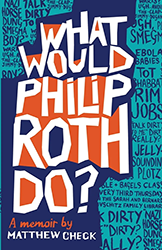Benjamin Taylor recreates the story of his unlikely friendship with Philip Roth in, Here We Are—a startlingly intimate portrait of Roth in his later years. After meeting briefly in the mid-nineties, Roth and Taylor had become the closest of friends by 2001; the dynamic seemed to be this, an aspiring novelist and literary biographer more or less adopted by the aging novelist — a titan of American literature — looking back at the end of his long career. “We spent thousands of hours in each other’s company,” Taylor recounts, “He was fully half my life. I cannot hope for another such friend.” When Roth died from heart disease, age eighty-five in May 2018, it was Taylor who kept a vigil, watching over the body of his mentor, laying on a plinth in Columbia Presbyterian Hospital. He was, Taylor confesses, “the chosen parent of my middle age.”
Here We Are, seeks to reanimate Roth; it’s a challenging aim, to convey “the fact of Philip as he was.” Similar to his famous literary alter ego, Nathan Zuckerman, and many of his characters, Roth embraced the idea of the self as endlessly fluid, sliding between identities — like the figure of Coleman Silk in The Human Stain (2000), which Taylor ranks as Roth’s “Masterpiece.” In this vein, the narrator of Sabbath’s Theater (1995) proclaims Roth’s credo: “The law of living: fluctuation. For every thought a counter thought, for every urge a counter-urge.”
Out of love and loyalty, Here We Are shows an aging Roth still in motion, raging about old grievances and obsessed with “litigating the past.” Roth’s active inner life and his “insatiable emotional appetites” continued into his eighties, a testament to the “the young man he’d remained all along.” Roth and Taylor’s often hilarious conversations slide back and forth in time, dictated by Roth’s fluctuating moods. They return, in memory, to Roth’s nostalgia-infused childhood in Weequahic, a world “endlessly rediscovered” in his fiction. They discuss the arc of Roth’s literary career and his responses to critics (like Irving Howe) and rivals (like John Updike). They revisit the wrecks of Roth’s two marriages: Margaret Martinson Williams in the late fifties (“He never calmed down about their connubial hell”), and actress Claire Bloom. The latter wrote an exposé about their marriage, Leaving a Doll’s House, that Roth answered with an unpublished 300 page, point by point, rebuttal; Roth, in Taylor’s assessment, “could not get enough of getting even.” And sadly, in light of Roth’s serious heart condition and other ailments, they discuss the process of committing suicide should Roth ask his young friend for assistance.
Taylor’s achievement in Here We Are is, two years after his passing, to make Philip Roth present for us. According to Taylor, Roth was “an incomparable student of inner lives,” who possessed “the terrible gift of intimacy;” this ability allowed him to diagnose and pierce the defensive pieties guarding the self, and the deepest structures of American society that he absorbed — often celebrated — and yet sought, in his major novels, to expose. This is the Roth whom Taylor embraces. Roth’s “mineral-hard stare” pierces through to Taylor’s very core; at one key point, Roth’s insight saves Taylor from depression and his own suicidal thoughts.
“Everybody is full of cracks and fissures,” Roth observed in a 1984 interview, referring to his literary alter ego Zuckerman, “but usually we see people trying very hard to hide the places where they’re split.” This key observation applies, above all, to Roth himself. Benjamin Taylor’s deeply moving memoir explores Roth’s unhealed fissures, the “lines of fracture” that, as Taylor reports, Roth could never mend. Here We Are deepens our understanding of Roth’s “history-haunted” imagination. Although without biological children, Roth found in Benjamin Taylor a true son. Echoing the moral lesson of Patrimony, Roth’s book about his own father, Taylor arrives at a distinctly Rothian insight: “through memory we remain filial.”
Donald Weber writes about Jewish American literature and popular culture. He divides his time between Brooklyn and Mohegan Lake, NY.





